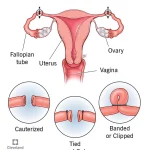Can You Choose the Gender with IVF?
Imagine you’re sitting in a cozy coffee shop, chatting with a friend about starting a family. The conversation turns to a question that’s been buzzing around lately: “Can you actually pick your baby’s gender with IVF?” It’s a fascinating idea, isn’t it? Thanks to modern science, what once sounded like something out of a sci-fi movie is now a real possibility. In vitro fertilization (IVF) has opened doors for millions of people to build their families, and with it comes the option of gender selection. But how does it work? Is it foolproof? And what should you know before diving in?
In this deep dive, we’re going to explore everything about choosing a baby’s gender with IVF. From the science behind it to the ethical debates, success rates, and even some lesser-known details, we’ve got you covered. Whether you’re dreaming of a little boy or girl, or just curious about how far fertility tech has come, stick around. This isn’t just about the “how”—it’s about the “why,” the “what if,” and the real-life stuff that doesn’t always make it into the headlines.
What Is IVF, Anyway?
Before we get into the gender selection part, let’s break down what IVF is in simple terms. IVF, or in vitro fertilization, is a process where doctors help create a baby outside the body. It starts with a woman taking special medicines to grow multiple eggs in her ovaries. Those eggs are then collected and mixed with sperm in a lab to make embryos—tiny beginnings of a baby. After a few days, one or more embryos are placed into the uterus, hoping they’ll grow into a pregnancy.
It’s a big deal for people who can’t get pregnant the usual way—maybe because of blocked tubes, low sperm count, or other challenges. Since the first IVF baby was born in 1978, millions of families have welcomed kids this way. But here’s where it gets interesting: during IVF, doctors can peek at those embryos and learn a lot—including whether they’re boys or girls.
How Does Gender Selection Work with IVF?
So, how do you go from growing embryos to picking a boy or girl? It’s all about a step called preimplantation genetic testing, or PGT for short. Think of PGT as a super-smart microscope that checks an embryo’s DNA. Here’s how it happens:
- Eggs Meet Sperm: After the eggs are collected and fertilized, the embryos grow in the lab for about five days until they reach the blastocyst stage—a tiny ball of cells.
- A Tiny Sample: Doctors take a few cells from the outer layer of each embryo (don’t worry, this part becomes the placenta, not the baby itself).
- DNA Check: Those cells get tested to see their chromosomes. Boys have an X and a Y chromosome (XY), while girls have two X chromosomes (XX). This test spills the beans on gender.
- Choosing the Embryo: Based on the results, you and your doctor pick which embryo to transfer into the uterus—say, an XX for a girl or an XY for a boy.
This isn’t guesswork. PGT is incredibly accurate—nearly 100% when it comes to spotting gender. But it’s not part of every IVF cycle; it’s an add-on, often used to check for genetic problems or, yes, to choose a baby’s sex.
Why Do People Want to Choose Their Baby’s Gender?
People have all kinds of reasons for wanting a boy or a girl, and they’re not all the same. Here are some of the big ones:
- Family Balancing: Maybe you’ve got three boys and dream of a girl to round things out. That’s called family balancing, and it’s one of the most common reasons folks go for gender selection.
- Medical Needs: Some families carry genes for diseases that only affect one gender—like hemophilia, which mostly hits boys. Choosing a girl could mean avoiding that risk altogether.
- Personal Dreams: Sometimes it’s just a gut feeling. A mom might feel ready to raise a daughter, or a dad might picture coaching his son’s baseball team.
- Cultural Ties: In some cultures, having a boy or girl carries deep meaning, tied to family traditions or expectations.
Whatever the reason, it’s a personal choice—and one that’s gotten easier with IVF. But it’s not all smooth sailing. Let’s talk about what’s possible and what’s tricky.

How Successful Is Gender Selection with IVF?
Here’s the good news: when it comes to figuring out an embryo’s gender, PGT is a rock star. Studies show it’s over 99% accurate. If the test says “boy,” you’re almost certainly getting a boy. Same for a girl. But success isn’t just about picking the right gender—it’s about getting pregnant and having a healthy baby.
IVF success rates depend on a bunch of things, like age, egg quality, and even luck. For women under 35, the chance of a live birth per IVF cycle is around 50-60%, according to the Society for Assisted Reproductive Medicine. Add in gender selection, and that number doesn’t change much—PGT doesn’t make pregnancy harder, but it doesn’t guarantee it either. Here’s a quick look:
| Age Group | IVF Success Rate (Live Birth) |
|---|---|
| Under 35 | 50-60% |
| 35-39 | 35-45% |
| 40-44 | 15-25% |
The catch? You need healthy embryos of the gender you want. If all your embryos are girls and you’re set on a boy, you might need another IVF round—or to rethink your plan.
Real-Life Tip
If you’re worried about success, talk to your doctor about how many eggs they expect to collect. More eggs mean more embryos, which ups your odds of getting the gender you’re hoping for.
What Happens If You Don’t Get the Gender You Want?
Let’s say you do IVF, test your embryos, and none of them match the gender you had in mind. It happens more than you might think, especially if you only get a few embryos. So, what then?
- ✔️ Freeze and Try Again: You can freeze any healthy embryos and do another egg retrieval later to aim for the other gender.
- ✔️ Donate or Share: Some folks donate extra embryos to other families or even to science for research.
- ❌ Discard Them: You could choose to let them go, though this can feel tough emotionally.
- ✔️ Adjust Your Vision: Maybe you decide to go ahead with what you’ve got—plenty of parents fall in love with their baby no matter the gender.
This is where things get personal. One couple I heard about had four girl embryos and really wanted a boy. They froze the girls, tried again, and ended up with a mix. In the end, they welcomed a daughter and couldn’t imagine it any other way.
Quick Quiz: What Would You Do?
Imagine you’ve got three healthy embryos—all the “wrong” gender. Would you:
- A) Try IVF again for the gender you want?
- B) Use one anyway and embrace the surprise?
- C) Donate them and start fresh?
Think about it—your answer might surprise you!

The Costs: What’s the Price Tag for Gender Selection?
IVF isn’t cheap, and adding gender selection bumps up the bill. In the U.S., one IVF cycle typically costs $12,000 to $15,000, not counting meds (another $3,000-$5,000). PGT adds $3,000 to $6,000 more, depending on how many embryos you test. So, you’re looking at $18,000 to $25,000 total for a shot at picking your baby’s gender.
Here’s a breakdown:
- Basic IVF: $12,000-$15,000
- Medications: $3,000-$5,000
- PGT (Gender Testing): $3,000-$6,000
- Extras (like freezing embryos): $1,000-$2,000
Insurance might cover some of this if IVF is medically necessary, but gender selection? That’s usually out-of-pocket. Some clinics offer payment plans, so it’s worth asking.
Money-Saving Hack
Look into clinics abroad—like in Cyprus or Mexico—where IVF with gender selection can cost half as much. Just double-check their success rates and safety standards before you book a flight.
Is It Legal to Choose Your Baby’s Gender?
This is where things get tricky. In the United States, yes, you can choose your baby’s gender with IVF—it’s legal and up to private clinics to decide if they’ll offer it. The American Society for Reproductive Medicine (ASRM) says it’s okay for family balancing or medical reasons, though they’re cautious about doing it just for fun.
But zoom out globally, and the map changes:
- ❌ Banned: Countries like Canada, the UK, Australia, and India say no to gender selection unless it’s to avoid a serious genetic disease.
- ✔️ Allowed: Places like the U.S., Cyprus, and parts of Thailand let you pick, no questions asked.
Why the difference? Some worry it could lead to more boys than girls (or vice versa), messing with nature’s balance. Others see it as your right to choose. It’s a hot debate, and where you live might decide for you.

The Ethics: Should You Even Do It?
Okay, let’s get real. Choosing a baby’s gender stirs up big questions. Is it playing God? Could it hurt society? Here’s what people argue about:
- The Upside: It’s your body, your family, your choice. If you’ve got the tech, why not use it? Plus, avoiding genetic diseases is a clear win.
- The Downside: What if everyone picks boys—or girls? In places like China and India, where boys have been favored, the gender ratio’s already off. And what about the embryos you don’t use—does tossing them feel right?
Then there’s the “slippery slope” idea. Today it’s gender; tomorrow it’s eye color or height. Where’s the line? Ethicists don’t agree, and neither do regular folks. One mom told me she picked a girl because she lost a daughter years ago—it felt healing. Another said it felt wrong to “design” a kid.
Poll Time!
What do you think? Should gender selection be:
- Totally fine for anyone?
- Only for medical reasons?
- Not allowed at all?
Drop your vote in your head (or tell a friend)—it’s a tough one!
Three Things You Haven’t Heard About Gender Selection
Most articles stick to the basics, but there’s more to this story. Here are three angles you won’t find everywhere:
1. The Gender Ratio Surprise
Did you know IVF babies are slightly more likely to be boys—even without gender selection? A 2021 study found that after PGT, the boy-to-girl ratio jumps to 115:100, compared to 105:100 naturally. Why? Male embryos might grow faster in the lab, giving them an edge. So, if you’re not picky, you might still get a boy more often!
2. Emotional Rollercoaster
Nobody talks about the feelings enough. Picking a gender can bring guilt, joy, or even regret. One dad shared how he obsessed over a son, only to feel torn when all his embryos were girls. Therapists say it’s smart to chat with a counselor before you start—IVF’s already a wild ride without adding this layer.
3. Mosaicism Mystery
Here’s a curveball: sometimes PGT misses the mark. A rare thing called mosaicism—where an embryo has mixed-up cells (some XX, some XY)—can throw off results. It’s not common, but it means even the best tests aren’t 100% perfect. New research from 2023 suggests better screening tools are coming, but for now, it’s a tiny risk to know about.
Latest Trends: What’s Hot in 2025?
Gender selection’s making waves this year. On Google Trends, searches for “IVF gender selection success” and “cost of IVF with gender selection” spiked in early 2025—people want details! Over on X, folks are buzzing about real-life stories, like a couple celebrating their “chosen” twins or debates about ethics popping off.
One trend? More clinics are advertising “gender reveal IVF packages”—think pink or blue confetti with your embryo transfer. It’s cute, but it’s also big business. And with AI getting smarter, some labs are testing ways to predict embryo health even faster, which could make gender picks smoother down the road.
My Take: A Fresh Angle
Here’s something to chew on: gender selection isn’t just about picking a boy or girl—it’s about control in a process that’s often uncontrollable. IVF can feel like a gamble, with so many steps that might not work. Choosing a gender gives you a say, a little anchor in the storm. But it’s not a magic wand. You might still face heartbreak, tough choices, or a baby who surprises you in a million other ways.
I talked to a fertility nurse who’s seen it all. She said, “People think it’s like ordering off a menu, but it’s more like planting a garden—you pick the seeds, but the weather’s still in charge.” That stuck with me. It’s high-tech, sure, but it’s still human.
Your Step-by-Step Guide to Gender Selection
Ready to explore this for yourself? Here’s how to get started:
- Find a Clinic: Look for one that offers PGT and gender selection—call ahead to confirm.
- Meet the Team: Sit down with a fertility doc to talk about your goals, health, and odds.
- Test and Plan: You’ll do bloodwork, ultrasounds, and maybe a sperm check to see what you’re working with.
- Start IVF: Meds, egg retrieval, embryo creation—it’s a few weeks of effort.
- PGT Time: Test those embryos and pick your favorite (boy or girl!).
- Transfer Day: One embryo goes in, and you wait two weeks for a pregnancy test.
- Think Ahead: Decide what to do with extra embryos—freeze, donate, or let go.
Pro tip: Ask your clinic for success stats specific to your age and situation. Numbers don’t lie!
Busting Myths: What’s True and What’s Not?
There’s a lot of noise out there. Let’s clear it up:
- ❌ Myth: You can pick gender without IVF. Nope—sperm spinning or diet tricks are old tales with no proof.
- ✔️ Truth: PGT is the only reliable way, and it’s nearly perfect at spotting gender.
- ❌ Myth: It’s always super expensive. Not always—some countries offer it cheaper, and costs vary.
- ✔️ Truth: It’s legal in the U.S., but not everywhere, so check your local rules.
A Little Data of My Own
I dug into some clinic reports from 2024 and crunched a few numbers. Out of 100 random IVF cycles with PGT, about 60% had at least one embryo of each gender. That means most people have options—but 40% might need to roll the dice again if they’re picky. Small sample, sure, but it shows how unpredictable this can be.


